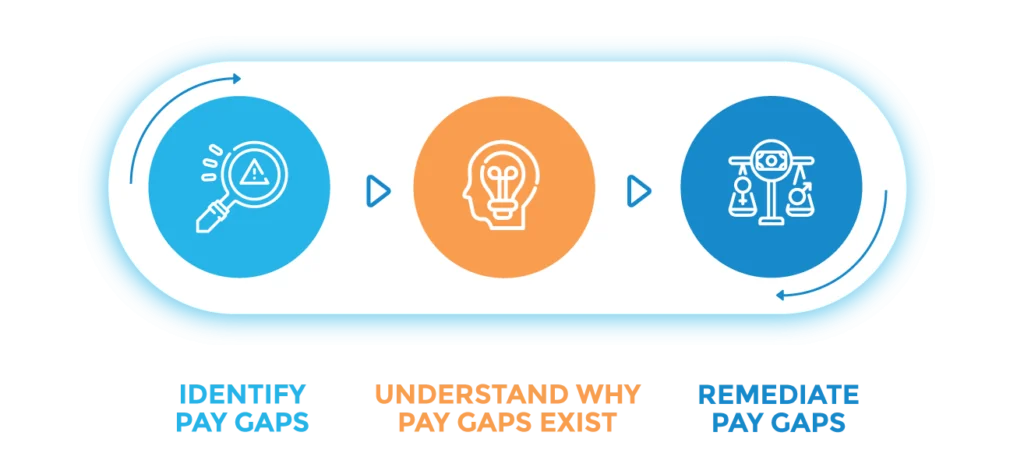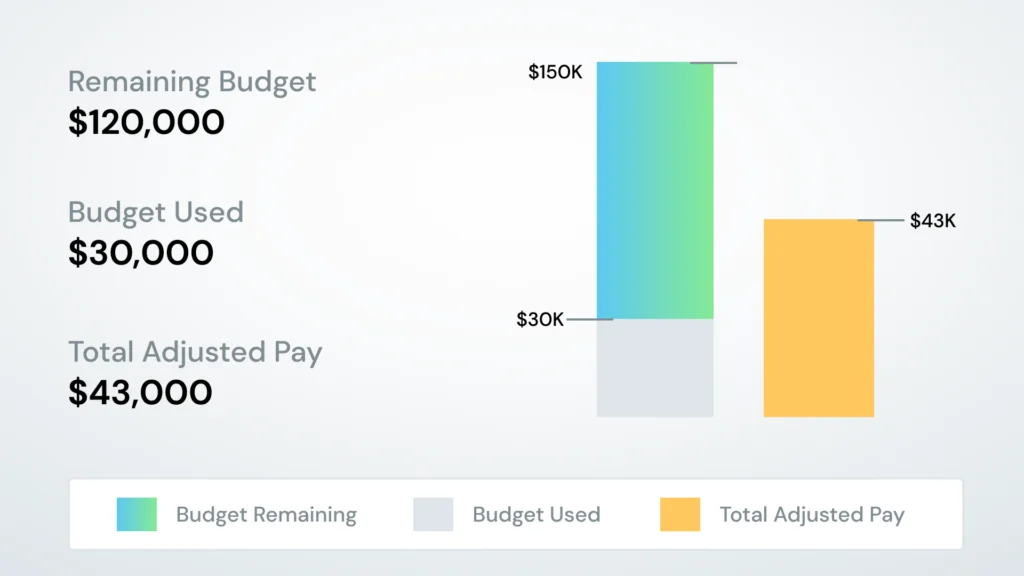Analyze, Resolve
& Prevent Unfair Pay Practices
Get full visibility into internal equal pay data with a pay equity analysis that gives you faster, more actionable insights. Help your organization reach its full potential by compensating employees fairly.









Fair Pay Is the Only Way for World-Class Business

Identify Pay Gaps
Empower your HR team with a pay equity analysis that collects, organizes and visualizes your data. This allows your team to:
- Analyze your entire workforce to ensure no one is left behind.
- Pinpoint pay gaps based on gender, race or ethnicity.
- Regularly monitor compensation equity in real time.

Understand Why
Pay Gaps Exist
HRSoft uses a regression analysis function to predict, compare and segment your data. As a result, you can:
- Determine the impact of compensable factors on pay gaps.
- Uncover the underlying causes of pay gaps.
- Gain actionable data for federal, state and local reporting.

Remediate Pay Gaps
Paying people fairly is the right thing to do. Our user-friendly pay equity analysis helps leaders:
- Calculate the potential budget impact of closing pay gaps.
- Attract and retain top talent by paying employees fairly.
- Eliminate pay inequity to protect your bottom line and reputation.


Integrate Pay Equity
Analysis With the
Full Lifecycle
Our pay equity analysis fully integrates with our compensation management solution and your core HR platform for a seamless experience.
With the HRSoft ecosystem, you can:
- Sync data between solutions to keep everything up to date.
- Integrate software with your broader HR tech stack.
- Add powerful functionality and flexibility to your core HRIS and HCM.
- Scale and adapt your HR suite as your organization grows.
Frequently Asked Questions
Pay equity is the notion of compensating employees equally when they perform the same job duties, regardless of race, religion, sex, age, disability, or any other factors prohibited by law. It also takes other factors into account, such as an employee’s experience level, tenure, and job performance.
Everyone needs pay equity because everyone deserves to be paid a fair and equal wage. This is especially true for people who have been historically undervalued due to a sex or race bias, such as women and people of color.
Pay equity is beneficial because it helps to close the wealth gap, improve employee morale and retainment, and attract new talent. It also allows employers to avoid discrimination lawsuits, maintain compliance, and protect their bottom line.
Pay equity is important because it ensures everyone is paid fairly for their work, regardless of who they are. Historically, women have earned less than men for doing the same job. Even though there have been improvements over the years, there is still much to be done.
General best practices for pay equity include reviewing compensation trends to compare your employee pay compares to the market, providing transparency so that employees understand the decisions going into pay decisions, limiting salary negotiations so compensation is more focused on employees meeting objectives, and prioritizing budgets that can help to close the wage gap.
A pay equity analysis is the process of looking into your organization’s employee compensation and determining if there are pay differences based on age, race, gender, and other factors. Through this procedure, you can find out where there is possible pay disparity and make appropriate changes to ensure pay equity. When you perform a pay equity analysis, it shows that you take diversity, equity, inclusion and belonging (DEIB) seriously.
To conduct a pay equity analysis, start by planning your process all stakeholders understand why it’s happening. This will help to create buy-in and allow you to create a more accurate analysis. Then, you can start researching your pay policies and gathering data. Use that information to compare the compensation of employees who perform similar roles. That way, you can analyze the data to figure out if employees are being paid fairly and if any pay disparities are legal.
Pay equity focuses on equal pay for employees with similar roles. Pay equality takes a broader approach by focusing on the equality of opportunity. For example, if an underrepresented employee has the skills and experience necessary to perform a senior-level role, they should have equal opportunity to be promoted.
The gender wage gap is the pay disparity in median earnings between men and women. To calculate the gender wage gap, examine the wage of women and men who work full-time all year round. Divide the median earnings of women by the median earnings of men, and then round to the nearest $100.
Pay equity analysis software empowers organizations to identify and understand employee pay gaps. The software measures employee compensation based on the market and industry trends so that organizations can see how their compensation compares. Pay equity analysis software also calculates the potential impact of closing pay gaps and offers the ability to create pay policy models to help prevent unfair pay practices moving forward.